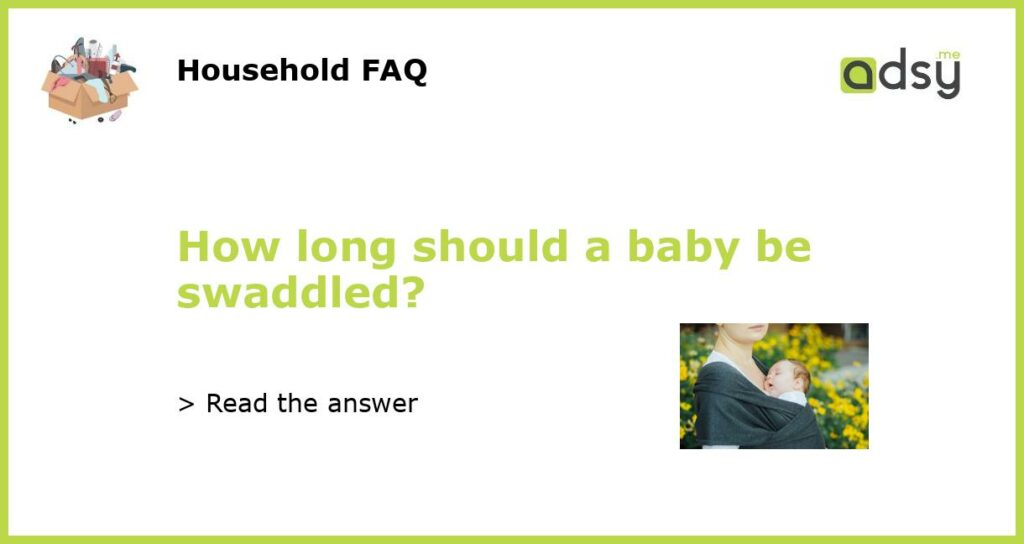Swaddling: The age-old practice for babies
Swaddling is a common practice that involves wrapping a baby in a blanket or cloth to create a cozy, secure environment. This technique has been used for centuries and is believed to help comfort and soothe newborns by mimicking the feeling of being in the womb. However, there is some debate about how long babies should be swaddled. Let’s delve into this topic and explore the different opinions and recommendations.
The benefits of swaddling
Swaddling can provide a range of benefits for babies. It can help them feel safe and secure, which may promote better sleep and reduce fussiness. Swaddling can also inhibit the startle reflex, which can be disruptive to a baby’s sleep. Furthermore, swaddling may help regulate a baby’s body temperature and prevent them from scratching their face. These benefits have led many parents to adopt swaddling as a soothing technique for their little ones.
Age recommendations for swaddling
The appropriate age to stop swaddling can vary depending on the baby and their developmental stage. The American Academy of Pediatrics (AAP) recommends that swaddling should be discontinued once a baby starts to roll over on their own, usually around 2 to 3 months of age. Rolling over can increase the risk of suffocation, as swaddling restricts their movement and can interfere with their ability to breathe.
While the AAP provides a general guideline, it’s important to consider each baby’s individual development. Some babies may start rolling over earlier or later than others, so it’s crucial to monitor their milestones and adjust swaddling practices accordingly. Consulting with a pediatrician can provide personalized advice specific to your baby’s needs.
Alternatives to swaddling
If your baby has outgrown swaddling or if you feel it’s time to transition away from it, there are alternatives that can help provide a sense of comfort and security. One option is to use a sleep sack or wearable blanket. These garments offer a similar cocoon-like feel without restricting movement or posing suffocation hazards. Sleep sacks come in various designs and sizes, allowing for flexibility as your baby grows.
Another alternative is introducing a transitional object, such as a stuffed animal or a blanket. These objects can provide a sense of familiarity and comfort without the need for swaddling. However, it’s essential to ensure that any objects placed in the crib are safe and do not pose a risk of suffocation or entanglement.
Monitoring your baby’s comfort and safety
When it comes to swaddling or any other sleep practices, it’s vital to prioritize your baby’s comfort and safety. Regularly check on your baby while they are swaddled to make sure they aren’t overheating and that the swaddle is secure but not too tight. Be mindful of any signs of discomfort or distress, and adjust your swaddling or sleep practices accordingly.
Additionally, always place your baby to sleep on their back to reduce the risk of sudden infant death syndrome (SIDS). Keep the crib free from loose bedding, pillows, and other potential hazards. Following safe sleep guidelines can help ensure your baby’s well-being while they sleep.






